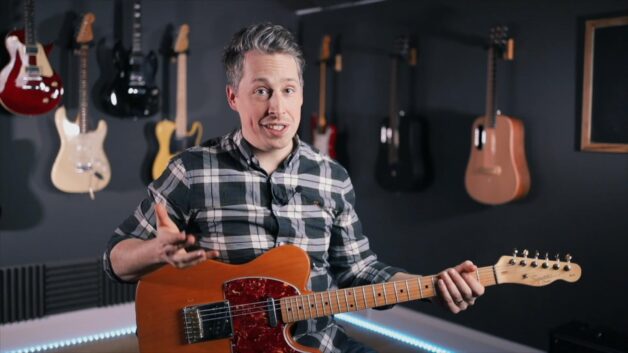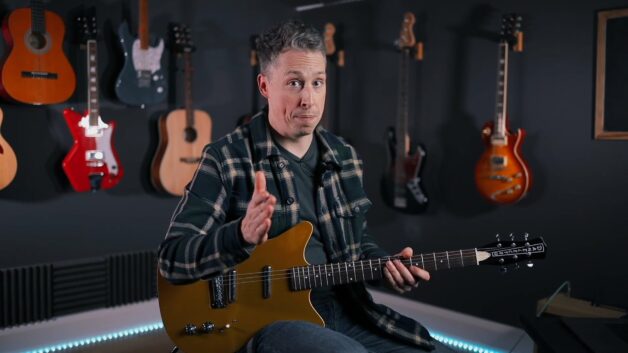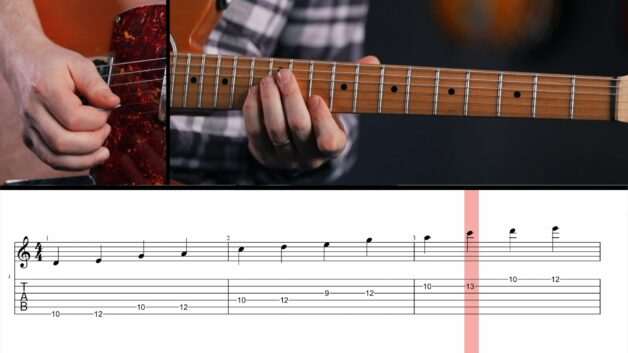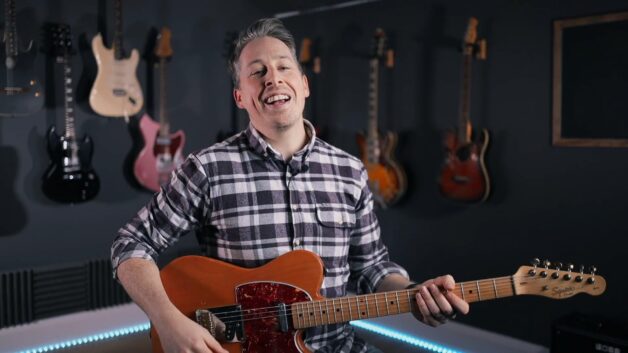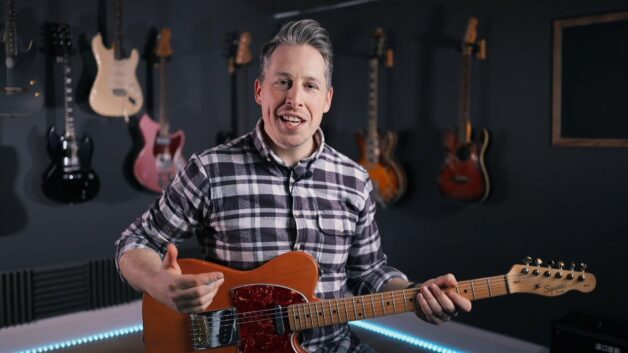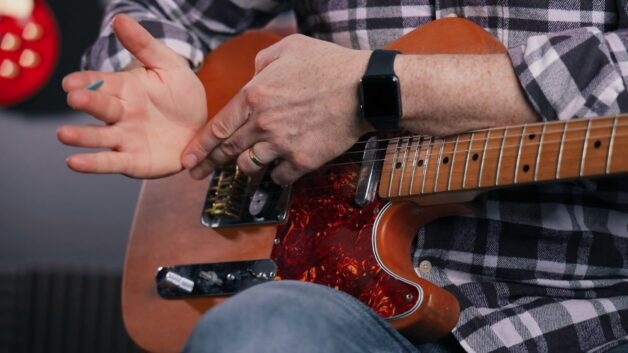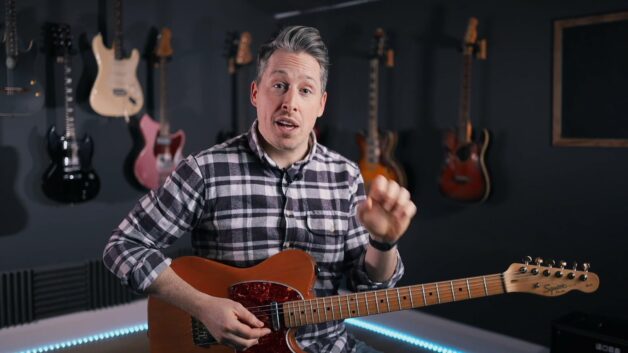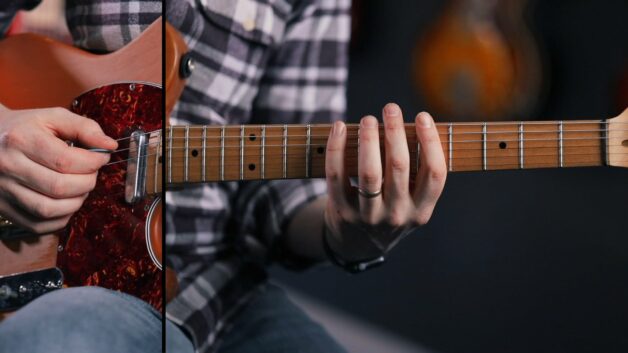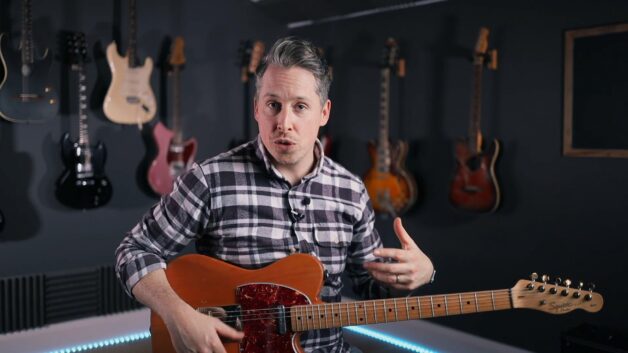Module 3 - Lesson 1
Introduction to Blues Guitar Soloing
 Julien Bitoun
Julien Bitoun
- Beginner
-
MODULE 3
Introduction to Guitar Solos by Styles - Introduction to Blues Guitar Soloing
- Introduction to Rock Guitar Soloing
- Introduction to Jazz Guitar Soloing
Recommended songs
| Title | Album | Type | |
|---|---|---|---|
Black Magic Woman

|
Abraxas | Guitar, Bass & Backing Track | |
Boom Boom

|
Lead Guitar | ||
Cocaine

|
Lead Guitar | ||
| Crosscut Saw | Born Under a Bad Sign | Full Score | |
Damn Right, I've Got The Blues

|
Damn Right, I've Got the Blues | Guitars, Bass & Backing Track | |
Further Up On The Road

|
EC Was Here | Guitars, Bass & Backing Track | |
Have You Ever Loved A Woman

|
Layla and Other Assorted Love Songs | Guitars, Bass & Backing Track | |
Hoochie Coochie Man

|
Lead Guitar | ||
La Grange

|
Lead Guitar | ||
Mannish Boy

|
Guitars, Bass & Backing Track | ||
Since I've Been Loving You

|
Led Zeppelin III | Guitars, Bass & Backing Track | |
Still Got the Blues

|
Still Got the Blues | Guitars, Bass & Backing Track | |
Texas Flood

|
Texas Flood | Guitar, Bass & Backing Track | |
The Thrill Is Gone

|
Lead Guitar | ||
Tush

|
Guitars, Bass & Backing Track | ||
Wonderful Tonight

|
Slowhand | Guitars, Bass & Backing Track |
Beginner Blues Guitar Soloing: Finding Your Voice in the Blues
Blues guitar soloing isn’t just about playing the right notes, it’s about how you play them. That’s what makes blues one of the most expressive and enduring styles in guitar music. If you’ve ever been drawn to the raw emotion of B.B. King’s vibrato, the biting attack of Stevie Ray Vaughan’s bends, or the smooth phrasing of Eric Clapton’s licks, you’re already on the right track. But where do you start?
If you’re a beginner, learning to solo in the blues can feel overwhelming at first. There are scales to memorize, techniques to master, and a long tradition of legendary players who make it all sound effortless. But the good news? Blues soloing has a clear structure, and once you get familiar with it, you’ll start to find your own sound.
Key Takeaways Before You Start
- Blues soloing is the backbone of many other genres, from rock to jazz.
- The pentatonic scale is your best friend: learn it inside out.
- Expressive techniques like bending, vibrato, and slides make the difference.
- Learning from classic solos is crucial to developing your style.
- Gear choices matter, but how you play is always more important than what you play.
Where It All Began: A Quick Look at Blues Guitar Evolution
Blues didn’t start with shredding solos or fancy effects, it began in the early 20th century with acoustic Delta Blues players, using nothing but their fingers, slide techniques, and raw emotion. Without amplification, the early blues pioneers relied on phrasing and dynamics to create expression. It wasn’t until the 1950s Chicago Blues era, with players like Buddy Guy and the Kings (B.B., Freddy, and Albert), that the electric guitar became a true solo instrument.
By the time the British blues explosion of the 1960s hit, players like Eric Clapton, Jeff Beck, and Jimmy Page took these American blues foundations and injected more power, distortion, and aggression. This, in turn, inspired Texas blues giants like Stevie Ray Vaughan, and later, modern blues-rock revivalists like Joe Bonamassa and Marcus King.
So why does this history matter? Because when you’re soloing in the blues, you’re stepping into a tradition. You’re speaking a musical language that has evolved over decades. The good news is that every great blues player started with the same vocabulary, the pentatonic scale and a handful of key techniques.
The Fundamentals of Beginner Blues Guitar Soloing
Step One: Mastering the Pentatonic Scale
If there’s one thing every blues guitarist knows inside out, it’s the minor pentatonic scale. This five-note pattern is the foundation of blues soloing and gives you access to countless licks used by legends. Start by learning it in at least two positions on the fretboard. Eventually, you’ll want to connect all five, but don’t rush it.
A common beginner mistake? Playing the scale too mechanically. Blues isn’t about running up and down scales, it’s about making them sing. That’s where phrasing comes in.
Step Two: Adding Expression Through Technique
A blues solo is nothing without expression. Here’s where things get interesting:
- Bending: A signature move in blues, bending allows you to reach in-between notes, mimicking the human voice. A half-step or whole-step bend is common, but make sure you’re hitting the right pitch. Many beginners bend out of tune.
- Vibrato: This is where your personality shines. Whether you prefer the slow, wide vibrato of B.B. King or the more aggressive shake of Stevie Ray Vaughan, it’s what gives your playing life.
- Slides & Pull-offs: These techniques keep your playing fluid, helping you transition smoothly between notes.
Step Three: Learning from the Greats
You don’t need to reinvent the wheel. The best way to develop your phrasing is to learn solos from legendary players. Some must-learn blues solos include:
- “The Thrill Is Gone” – B.B. King (A masterclass in vibrato and space)
- “Cocaine” (Eric Clapton’s version) (Blues-rock phrasing with a punch)
- “Hoochie Coochie Man” – Muddy Waters (Raw, powerful, and packed with blues feel)
A smart approach is to loop short sections of these solos and listen carefully to every nuance. If a note sounds great, ask yourself why. Is it because of a subtle bend? A specific rhythmic placement? These details matter.
Finding Your Sound: Gear, Tone, and Common Pitfalls
Choosing the Right Guitar and Amp Settings
While blues tone isn’t just about gear, your guitar and amp settings can help shape your sound. Here’s what you need to know:
- Guitar: A Stratocaster (single-coil pickups) will give you a bright, snappy sound like Stevie Ray Vaughan, while a Les Paul (humbuckers) offers a thicker, warmer tone.
- Amp Settings: Keep the mids pushed up, avoid scooping them (which is common in metal but kills a blues tone). A touch of overdrive helps, but don’t overdo it. Blues solos should sound natural, not overly compressed.
- Neck Pickup: Many blues players prefer the neck pickup for solos, as it gives a rounder, more vocal tone.
Common Beginner Mistakes (and How to Avoid Them)
When starting out with blues soloing, it’s easy to fall into some traps. Here are a few to watch for:
- Overplaying: Many beginners try to cram too many notes into their solos. Blues is about phrasing and space. Listen to how B.B. King often lets notes breathe.
- Ignoring Dynamics: Every note doesn’t need to be played at the same intensity. Experiment with softer and louder passages to make your playing more expressive.
- Lack of Bending Control: If your bends are even slightly out of tune, your solo will sound off. Check yourself by bending to match a fretted note.
Start Playing Blues Solos Today
The best way to learn beginner blues guitar soloing is to dive in. Start with the pentatonic scale, listen to legendary players, and practice bending and vibrato until your notes start to sing. Most importantly, don’t just play the notes, listen to what you’re saying with them. Blues soloing isn’t just about technique; it’s about telling your own story, one note at a time.

